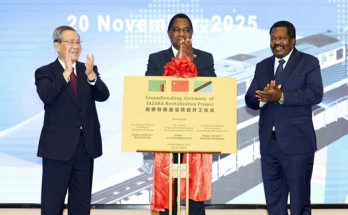 Base Resources’ chief executive Tim Carstens, who has helped the ministry write its policies and regulations, says that the investment climate has already improved. “The steps that were being taken [until last year] were frightening to capital,” he says. “The noises that are coming out of Kenya now are the soothing noises that investors want to hear. “You can feel we’re in the starting gate. Everyone involved is wanting to get things moving.” Base Titanium, Base Resources’ wholly-owned subsidiary that operates Kwale, has applied to undertake further exploration around its mine; foreign companies are considering prospecting for niobium along the coast; and Acacia, owned by Canada’s Barrick Gold, is among those prospecting for gold — on the Kenyan shores of Lake Victoria.
Base Resources’ chief executive Tim Carstens, who has helped the ministry write its policies and regulations, says that the investment climate has already improved. “The steps that were being taken [until last year] were frightening to capital,” he says. “The noises that are coming out of Kenya now are the soothing noises that investors want to hear. “You can feel we’re in the starting gate. Everyone involved is wanting to get things moving.” Base Titanium, Base Resources’ wholly-owned subsidiary that operates Kwale, has applied to undertake further exploration around its mine; foreign companies are considering prospecting for niobium along the coast; and Acacia, owned by Canada’s Barrick Gold, is among those prospecting for gold — on the Kenyan shores of Lake Victoria.
Bulyanhulu is a few hundred kilometres away on the Tanzanian side of the lake and Acacia’s vice-president for exploration Peter Spora, says he is “cautiously optimistic” about both his company’s prospects and mining in Kenya in general. “Look where Tanzania was in 1999 and 2015 and where Kenya is now,” he says. “I’d say there’s less prospectivity than what we’ve seen in Tanzania but there’s been a lot less exploration so it’s not clear.” Mr Spora says Mr Kazungu has been “very accessible” and is “going about it the right way” to attract more investment. But, he cautions: “We haven’t seen the final code and we still don’t have the transparency we would like.” Issues such as securing exploration consent and the cost of a mining development agreement are also unresolved. Mr Carstens expects the final regulations to be sufficiently investor friendly to attract new companies but says Mr Kazungu’s targets may be ambitious. “Ten years from discovery to production is fast and there are no advanced big projects in Kenya,” he says. “So we might see two in the next 10 years and perhaps three or four by 2030.”



